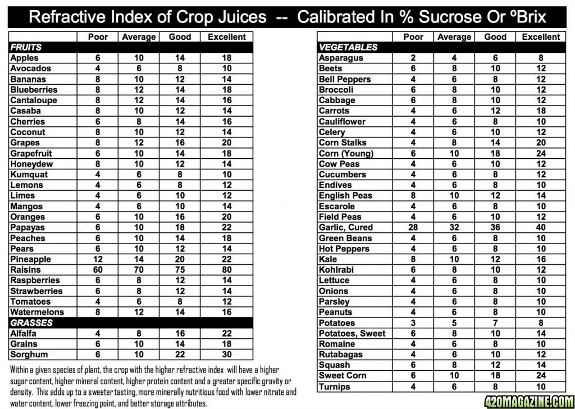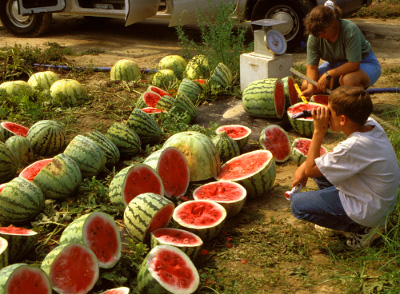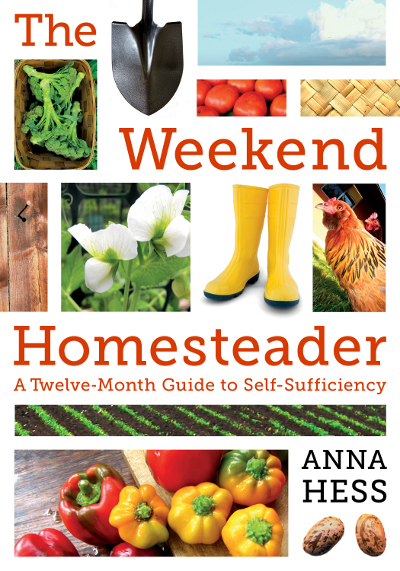
Rabenberg on brix

 "Brix" is one of those terms
tossed around by folks in alternative agriculture circles that I
considered a little kooky in the past. The idea is simple --- you
use a meter to determine the percent by weight sugar in a plant, which
gives you a rough estimate of the nutritional quality of the food since
more nutritious crops are usually also sweeter.
"Brix" is one of those terms
tossed around by folks in alternative agriculture circles that I
considered a little kooky in the past. The idea is simple --- you
use a meter to determine the percent by weight sugar in a plant, which
gives you a rough estimate of the nutritional quality of the food since
more nutritious crops are usually also sweeter.
Even though I agree with
the theory behind brix, I used to roll my eyes at the
implementation. I can taste the difference in brix between my
homegrown vegetables and the ones in the grocery store, so why buy a
$100 meter?
Glen Rabenberg's talk on
"Improving crop quality using readily available tools" helped me
realize that my understanding of brix in the garden is overly
simplistic. He doesn't just check the brix of crops being
harvested; he monitors plants at various stages of their life span to
prevent disease and insect problems.
 Rabenberg asserts that at
increasing levels of brix, farms become healthier in a holistic
fashion. Disease fungi and thrive at a brix below 7, but when the
leaves of a plant reach a brix of around 10 to 11, Rabenberg sees
drought resistance in the crops and fewer weeds nearby. At 13 to
14, he begins to see resistance to pest insects. Having recently
seen in a scientific source that the fire blight
bacteria are deterred by high levels of sugar in pear nectar, I'm willing to believe that
there's some truth to Rabenberg's ideas.
Rabenberg asserts that at
increasing levels of brix, farms become healthier in a holistic
fashion. Disease fungi and thrive at a brix below 7, but when the
leaves of a plant reach a brix of around 10 to 11, Rabenberg sees
drought resistance in the crops and fewer weeds nearby. At 13 to
14, he begins to see resistance to pest insects. Having recently
seen in a scientific source that the fire blight
bacteria are deterred by high levels of sugar in pear nectar, I'm willing to believe that
there's some truth to Rabenberg's ideas.
So, how do you raise the
brix of your food? As with plant
secondary metabolites,
the key is balanced soil. Rabenberg believes that most soil
problems can be remedied by focusing on five minerals --- calcium,
phosphorus, and (to a lesser extent) potassium, magnesium, and
sulfur. If Rabenberg sees low brix, he performs a soil test and
usually adds calcium and/or phosphorus on the theory that a more
nourished plant will produce more sugar and be more resistant to
problems. In his experience, potassium is actually often too
high, leading to weed problems --- if that's the case, you need to
round out your fertilizing campaign to prevent a buildup of the
important, but easy to overdo, nutrient.
 I know I've said "asserts"
and "believes" a lot of times in this post --- it's not because I don't
think Rabenberg is on the right track. However, I want to read up
more on the topic before I take his word as gospel, and suggest you do
too. Still, perhaps Rabenberg is right and I need to start
collecting data on the brix levels of our crops (and on the electrical
conductivity of our soil, a topic which will have to be its own post at
a later date). Perhaps if I noticed when tomato plants were
most at risk, I could head blights off at the pass?
I know I've said "asserts"
and "believes" a lot of times in this post --- it's not because I don't
think Rabenberg is on the right track. However, I want to read up
more on the topic before I take his word as gospel, and suggest you do
too. Still, perhaps Rabenberg is right and I need to start
collecting data on the brix levels of our crops (and on the electrical
conductivity of our soil, a topic which will have to be its own post at
a later date). Perhaps if I noticed when tomato plants were
most at risk, I could head blights off at the pass?
Find out how to test your soil and
interpret the results in Weekend
Homesteader.
| This post is part of our ACRES conference lunchtime series.
Read all of the entries: |
Want more in-depth information? Browse through our books.
Or explore more posts by date or by subject.
About us: Anna Hess and Mark Hamilton spent over a decade living self-sufficiently in the mountains of Virginia before moving north to start over from scratch in the foothills of Ohio. They've experimented with permaculture, no-till gardening, trailersteading, home-based microbusinesses and much more, writing about their adventures in both blogs and books.
Want to be notified when new comments are posted on this page? Click on the RSS button after you add a comment to subscribe to the comment feed, or simply check the box beside "email replies to me" while writing your comment.
